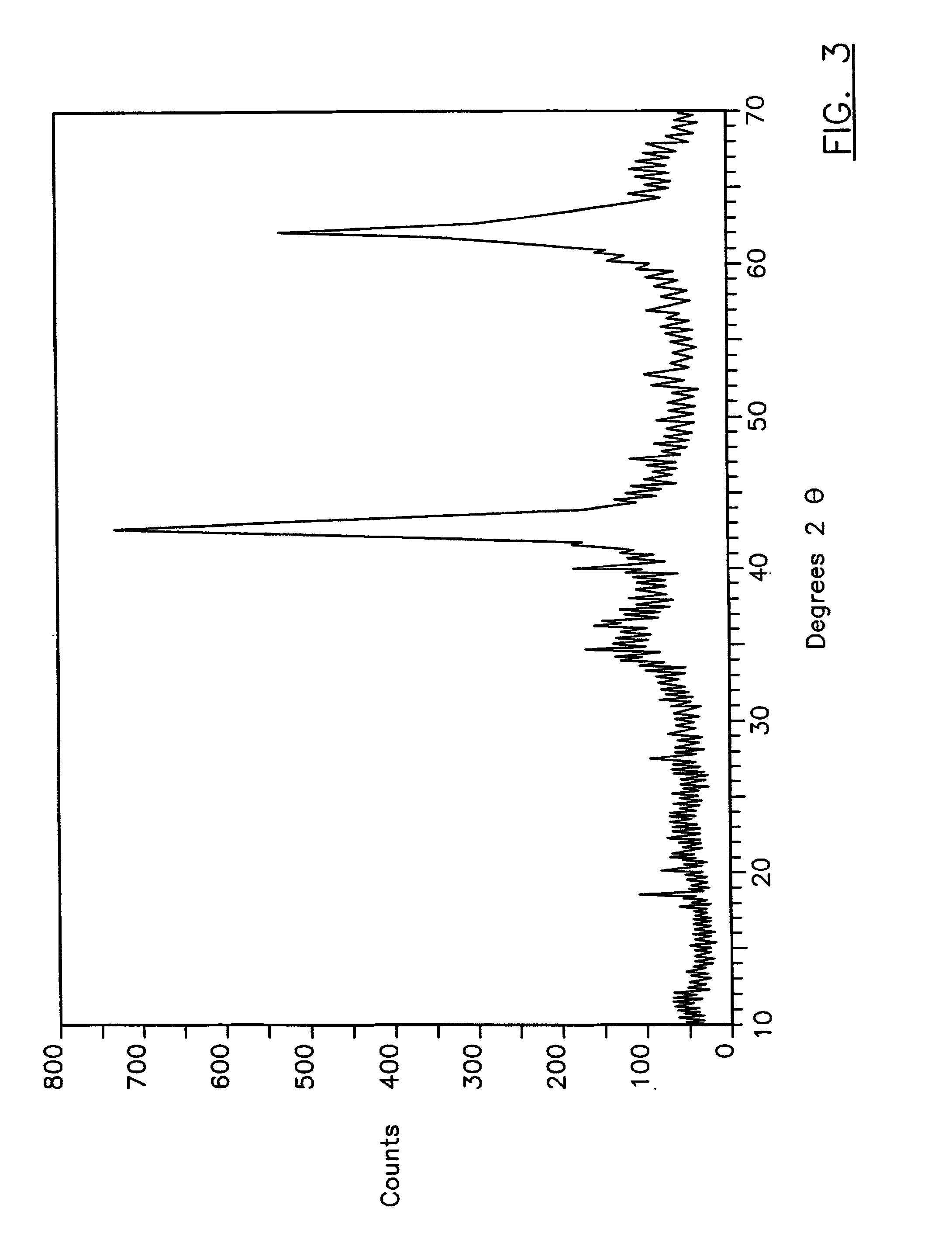Rheology modified compositions and modification agents
- Summary
- Abstract
- Description
- Claims
- Application Information
AI Technical Summary
Benefits of technology
Problems solved by technology
Method used
Image
Examples
example 1
[0044] A quantity of Alcoa Corporation's "HTC-GL", described by the manufacturer as a green liquor ("unwashed") hydrotalcite slurry, is ramp-calcined in a rotary kiln to a temperature of about 1000.degree. C., with the maximum temperature maintained for about 15 minutes and a total ramp time of about 45 minutes. About 0.43 g of this material is mixed with about 350 g of an aqueous 2.0 weight percent sodium bentonite clay dispersion. Mixing is carried out using a Hamilton Beach mixer for about 2 minutes, and then 0.15 g of sodium carbonate is added, along with a sufficient amount of a 30 percent by weight aqueous sodium hydroxide solution, to raise the fluid pH to about 10.5. The resulting composition thickens virtually immediately and shear is continued for about 10 minutes thereafter.
[0045] The composition's Theological and fluid loss properties are tested using standard methodology as described in detail in Manual of Drilling Fluids Technology, 1985, NL Baroid / NL Industries Inc., ...
example 2
[0047] A composition is prepared according to Example 1, except that following its preparation the composition is heated to about 200.degree. F. for about 40 hours. The composition is then allowed to cool to about 80.degree. F. and is then tested as in Example 1, with the following results:
2 Yield Point 135 Plastic Viscosity 10 6 RPM Reading 80 3 RPM Reading 65
example 3
[0048] A mixture is prepared according to Example 1, except that following its thickening, about 4 g of "Starpack II", a carboxymethylated starch fluid loss control agent sold by Chemstar Corporation, is added. The composition is then allowed to shear for the additional 10 minutes, as in Example 1, and then tested with the following results:
3 Yield Point 69 Plastic Viscosity 17 6 RPM Reading 68 3 RPM Reading 65
PUM
| Property | Measurement | Unit |
|---|---|---|
| Fraction | aaaaa | aaaaa |
| Fraction | aaaaa | aaaaa |
| Percent by mass | aaaaa | aaaaa |
Abstract
Description
Claims
Application Information
 Login to View More
Login to View More - R&D
- Intellectual Property
- Life Sciences
- Materials
- Tech Scout
- Unparalleled Data Quality
- Higher Quality Content
- 60% Fewer Hallucinations
Browse by: Latest US Patents, China's latest patents, Technical Efficacy Thesaurus, Application Domain, Technology Topic, Popular Technical Reports.
© 2025 PatSnap. All rights reserved.Legal|Privacy policy|Modern Slavery Act Transparency Statement|Sitemap|About US| Contact US: help@patsnap.com



